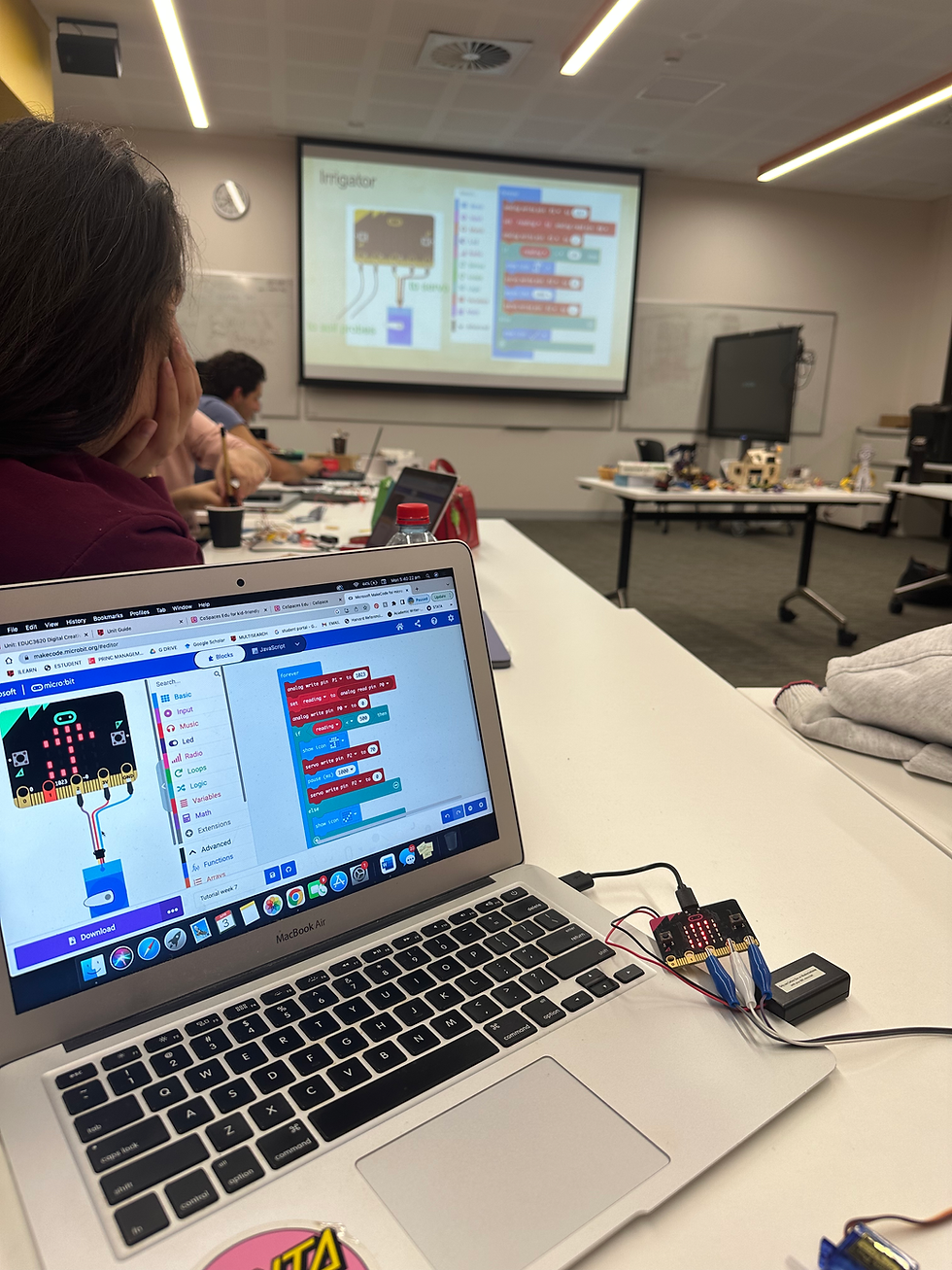Makecode
- Giselle Tarimo
- Apr 10, 2023
- 2 min read
Updated: Apr 12, 2023
It is crucial for the instructor to keep the students' attention throughout the course in a classroom setting by incorporating hands-on activities. This overarching concept is connected to constructionism, which is the belief that children learn via doing (Donaldson, 2014). Another concept related to this is the concept of construction, which is connected to constructivist theory. It refers to children producing a tangible good that has personal significance for them, which adds value to the educational process.
Teaching students how to build code for a micro bit is instructional content that is connected to project-based learning, which is constructionism. Students develop remarkable design thinking skills as early as Kindergarten through the use of activities that include digital technologies like 3D design and others (Bower, 2018).
Blikstein (2013) evaluated the concept of digital fabrication and the learning activities that supported it. In his research, he discovered that digital manufacturing opportunities let kids explore a variety of courses in harmony, like music and robots. Students were able to go through a range of emotions during their meaningful creative process, including passion and frustration.
The website makecode/micro bit, which enables students to write their own coding to link to their microbit design, is an example of a platform that might be utilised in the classroom. Makecode is a platform that allows for the user to experience the process of creating basic programming. Students get the opportunity to develop their digital creativity skills by encoding and experiencing the overall programming experience (Devine, 2019). The image of some designs that were presented to my students as an illustration of possible student work and some creative ideas is included below.

I also shared the coding procedure we developed to make the micro bit water the plant in response to the day's rainy weather. The only drawback to training like this is that when it comes to coding a micro bit, teachers frequently lack confidence in their technological abilities (Lloyd,2020). Although it can be tricky or challenging for teachers to teach this general unit topic, implementing a brief lesson centred on it is still useful.

References:
Bower. (2018). Makerspaces in Primary School Settings Advancing 21st Century and STEM capabilities using 3D Design and 3D Printing. Macquarie University. https://research-management.mq.edu.au/ws/portalfiles/portal/106597085/106594641.pdf
Devine, Finney, J., de Halleux, P., Moskal, M., Ball, T., & Hodges, S. (2019). MakeCode and CODAL: Intuitive and efficient embedded systems programming for education. Journal of Systems Architecture, 98, 468–483. https://doi.org/10.1016/j.sysarc.2019.05.005
Donaldson. (2014). The Maker Movement and the rebirth of Constructionism. Hybrid Pedagogy. https://hybridpedagogy.org/constructionism-reborn/
Lloyd, & Chandra, V. (2020). Teaching coding and computational thinking in primary classrooms : perceptions of Australian preservice teachers. Curriculum Perspectives, 40(2), 189–201. https://doi.org/10.1007/s41297-020-00117-1





Comments